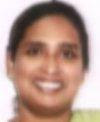Rhythm Divine
Gujaratis in Goa, combine religion and devotion with dance, fun and a riot of colours during Navratri, find Preetu Nair & Govind Kamat Maad
Janvi Shah is determined to keep her title of ‘Garba Queen’ intact. The 19-year-old, aspiring chartered accountant, who’s been winning on the dance floor since she was 9, has spent a fortune on her dazzling chanya cholis (flowing skirt, blouse and long stole) and oxidized jewellery.
“The competition is judged on dress and dance, so all my outfits come from Gujarat and my mother has helped me combine the trendy new designs with the traditional look,” says Shah.
For the Gujarati community in Goa, Navratri celebrations start at least six months in advance. “We get 80-100 orders each year, for chaniya cholis from Gujarat and Mumbai,” says homemaker Devyani Shah, who turns home-based entrepreneur during the period. Outfits range from Rs 3,000 to Rs 30,000, she adds.
Learning the latest dance moves is also big. “We’ve been practicing since a month, every year there’s something new,” says homemaker Sangeeta Parekh.
At Margao’s Gujarati Samaj hall, the “experienced elders” teach the new generation the traditional steps of garba (ritual dance) and dandiya (stick dance). The big night for the “trainees” will be October 11 when the Samaj celebrates Dandiya Rajani at the Jawaharlal Nehru Stadium, Fatorda. “There’s no age or gender bar for learning these dances,” says Needhi Macarawala, whose 12-yearold daughter Noopur has been learning the dandiya since a fortnight.
Panaji-based businessman Harish Hirani points to the 200 dandiyas picked up from Mumbai and Pune and says, “Since its a long holiday weekend this time, we’re expecting huge crowds at the Gasper Dias club, Panaji.” Panaji Gujarati Yuvak Mandal president Kapil Shah adds, “No drinking and drunks will be allowed though.”
Elaborating on the significance of the celebrations, Lalit Shah of Panaji says, it’s “family-bonding time”. “The age barrier is broken. It is fun to learn new steps from your children and the time spent together is precious,” says the chartered accountant. Terming the celebrations in Goa an as yet, “traditional affair”, Kapil Shah says the ritual puja of the Goddess Amba is still the “most important aspect of Navratri”. “It’s also, a purely family affair where anyone can come and play. This is our way of keeping our tradition alive here as people from 5 to 80 dance to the latest recorded garba tunes.”
While in garba, women worship through dance, an akhand diya (lamp) placed within an earthern pot which has holes in a certain order; dandiya sees men and women dance with small polished sticks. TNN
October 3, 2008, The Times of India, Goa edition
Subscribe to:
Post Comments (Atom)







No comments:
Post a Comment